 W
WThe Thirty Years' War was a conflict primarily fought in Central Europe from 1618 to 1648. Estimates of total military and civilian deaths range from 4.5 to 8 million, mostly from disease or starvation. In some areas of Germany, it has been suggested that up to 60% of the population died.
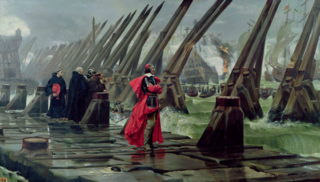 W
WThe Anglo-French War was a military conflict fought between the Kingdom of France and the Kingdom of England between 1627 and 1629. It mainly involved actions at sea. The centerpiece of the conflict was the Siege of La Rochelle (1627–28), in which the English crown supported the French Huguenots in their fight against the French royal forces of Louis XIII of France. La Rochelle had become the stronghold of the French Huguenots, under its own governance. It was the centre of Huguenot seapower and the strongest centre of resistance against the central government. The English also launched a campaign against France's new colony in North America which led to much of the territory including Quebec being seized.
 W
WThe Army of Flanders was a multinational army in the service of the kings of Spain that was based in the Spanish Netherlands during the 16th to 18th centuries. It was notable for being the longest-serving standing army of the period, being in continuous service from 1567 until its disestablishment in 1706. In addition to taking part in numerous battles of the Dutch Revolt (1567–1609) and the Thirty Years' War (1618–1648), it also employed many developing military concepts more reminiscent of later military units, enjoying permanent, standing regiments (tercios), barracks, military hospitals and rest homes long before they were adopted in most of Europe. Sustained at huge cost and at significant distances from Spain, the Army of Flanders also became infamous for successive mutinies and its ill-disciplined activity off the battlefield, including the Sack of Antwerp in 1576.
 W
WThe Latin phrase bellum se ipsum alet or bellum se ipsum alit, and its German rendering Der Krieg ernährt den Krieg describe the military strategy of feeding and funding armies primarily with the resources of occupied territories. It is closely associated with mass starvation in the population of these territories. The phrase, coined by Ancient Roman statesman Cato the Elder, is primarily associated with the Thirty Years' War (1618–1648).
 W
WThe Blue Regiment or the Blue Brigade was an infantry regiment in the service of Gustav II Adolph during his campaigns in Germany in the Thirty Years' War. A large portion of the regiment was made up of German mercenaries, who were a common phenomenon on both sides. The regiment's name is derived from the blue colored uniforms worn by the soldiers.
 W
WThe Bohemian Revolt was an uprising of the Bohemian estates against the rule of the Habsburg dynasty that began the Thirty Years' War. It was caused by both religious and power disputes. The estates were almost entirely Protestant, mostly Utraquist Hussite but there was also a substantial German population that endorsed Lutheranism. The dispute culminated after several battles in the final Battle of White Mountain, where the estates suffered a decisive defeat. This started re-Catholisation of the Czech lands, but also expanded the scope of the Thirty Years' War by drawing Denmark and Sweden into it. The conflict spread to the rest of Europe and devastated vast areas of central Europe, including the Czech lands, which were particularly stricken by its violent atrocities.
 W
WThe Bündner Wirren was a conflict that lasted between 1618 and 1639 in what is now the Swiss canton of Graubünden.
 W
WThe Catalan Republic was a short-lived independent state under French protection proclaimed in 1641 by the States-General of Catalonia led by Pau Claris, during the Reapers' War.
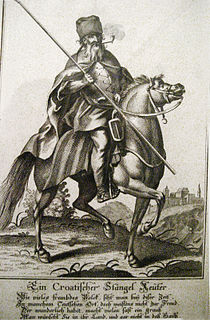 W
WThe Croats, also known as Cravats or Crabats were 17th-century light cavalry forces in Central Europe, comparable to the hussars. The Croats were initially irregular units loosely organized in bands. The first regular Croat regiment was established in 1625.
 W
WThe Diet of Regensburg of 1623 was a meeting of the Imperial States of the Holy Roman Empire convened by Holy Roman Emperor Ferdinand II. The meeting was not technically an imperial diet in the full sense, but a convention of princes or Deputationstag – a looser constitutional format giving the emperor greater leeway to take decisions without being bound by formal procedures. At it the Electorate of the Palatinate was transferred to Maximilian I of Bavaria. The meeting marked the high-water mark of imperial power during the Thirty Years' War.
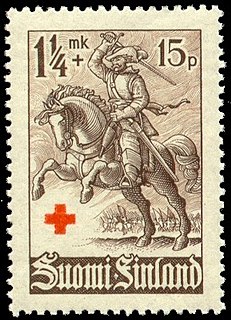 W
WHakkapeliitta is a historiographical term used for a Finnish light cavalryman in the service of King Gustavus Adolphus of Sweden during the Thirty Years' War. Hakkapeliitta is a 19th-century Finnish modification of a contemporary name given by foreigners in the Holy Roman Empire and variously spelled as Hackapelit, Hackapelite, Hackapell, Haccapelit, or Haccapelite. These terms were based on a Finnish battle cry hakkaa päälle, commonly translated as "Cut them down!"
 W
WThe Heilbronn League was formed in the Free Imperial City of Heilbronn, on 23 April 1633, during the Thirty Years' War. Led by Sweden, it brought together various Protestant states in western and northern Germany. It was supported by Saxony and Brandenburg-Prussia, although they were not members.
 W
WPeter Melander, Count of Holzappel was a German general who was a Protestant military leader in the Thirty Years' War until 1640 when he switched sides and even became Chief of the imperial troops of the League from 1647 until his death.
 W
WThe Italian Plague of 1629–1631 was a series of outbreaks of bubonic plague that ravaged northern and central Italy. This epidemic, often referred to as the Great Plague of Milan, claimed possibly one million lives, or about 25% of the population. This episode is considered one of the later outbreaks of the centuries-long pandemic of bubonic plague that began with the Black Death. The plague may have contributed to the decline of Italy's economy relative to that of other Western European countries.
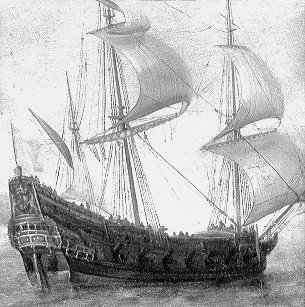 W
WLyon's Whelp or Lion's Whelp is the name of a historical British ship, it is also found in the Bible in Genesis 49:9 “Judah is a lion’s whelp”, Popularly today The name was given to a series of 16th-century naval ships, then in the 17th century to a fleet of ten full rigged pinnaces commissioned by the first Duke of Buckingham.
 W
WMiquelets or Micalets were irregular Catalan and Valencian mountain light troops. They enjoyed a certain prominence in the wars in the Iberian Peninsula during the 17th and 18th centuries, and in peace seem to have on occasion plundered travellers.
 W
WThe naval war on Lake Constance was a series of conflicts that took place on Lake Constance, beginning in 1632, in the context of the Thirty Years' War. At that time various powers ruled different parts of the shoreline: in the north and east was Roman Catholic, Habsburg Anterior Austria; in the northwest and west the troops of the Protestant Duchy of Württemberg with their allies from Kingdom of Sweden and Kingdom of France. These various powers sought, for strategic reasons, to exercise their hegemony over the area of Lake Constance. Only the partly Catholic and partly Protestant southern shore which belonged to the Old Swiss Confederacy maintained an uneasy neutrality due to their divided loyalties.
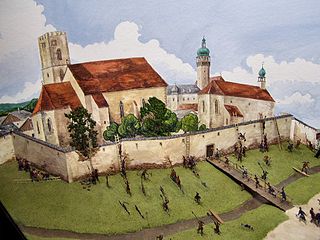 W
WThe Peasants' War in Upper Austria was a rebellion led by farmers in 1626 whose goal was to free Upper Austria from Bavarian rule. The motive was an escalation of the Bavarian kingdom's attempt to press the country into the Catholic faith at the time of the Thirty Years' War.
 W
WThe Protestant Union, also known as the Evangelical Union, Union of Auhausen, German Union or the Protestant Action Party, was a coalition of Protestant German states. It was formed on 14 May 1608 by Frederick IV, Elector Palatine in order to defend the rights, land and safety of each member. It included both Calvinist and Lutheran states, and dissolved in 1621.
 W
WThe Reapers' War, also known as the Catalan Revolt was a conflict that affected a large part of the Principality of Catalonia between the years of 1640 and 1659. It had an enduring effect in the Treaty of the Pyrenees (1659), which ceded the County of Roussillon and the northern half of the County of Cerdanya to France, splitting these northern Catalan territories off from the Principality of Catalonia and the Crown of Aragon, and thereby receding the borders of Spain to the Pyrenees.
 W
WScotland and the Thirty Years' War deals with the complicated involvement of the kingdom of Scotland in the Thirty Years' War of 1618–1648. Scotland and Scots were heavily entangled in both the diplomatic and military events centred on the Holy Roman Empire. There were a number of reasons for this participation.
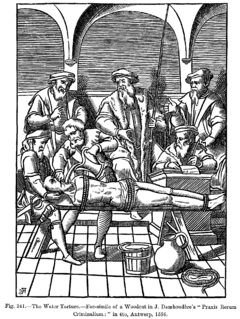 W
WThe Schwedentrunk is a method of torture and execution in which the victim is forced to swallow large amounts of foul liquid, such as excrement. The name was invented by German victims of Swedish troops during the Thirty Years' War. This method of torture was administered by other international troops, mercenaries and marauders, and especially by civilians following the Swedish baggage train, who received no pay. It was used to force peasants or town citizens to hand over hidden money, food, animals, etc., or to extort sex from women.
 W
WThe Swedish invasion of the Holy Roman Empire or the Swedish Intervention in the Thirty Years' War is a historically accepted division of the Thirty Years' War. It was a military conflict that took place between 1630 and 1635, during the course of the Thirty Years' War. It was a major turning point of the war: the Protestant cause, previously on the verge of defeat, won several major victories and changed the direction of the War. The Habsburg-Catholic coalition, previously in the ascendant, was significantly weakened as a result of the gains the Protestant cause made. It is often considered to be an independent conflict by most historians.
 W
WThe Torstenson war, Hannibal controversy or Hannibal War was a short period of conflict between Sweden and Denmark–Norway from 1643 to 1645 towards the end of the Thirty Years' War. The names refer to Swedish general Lennart Torstenson and Norwegian governor-general Hannibal Sehested.
 W
WThe Treaty of Stettin of 4 May 1653 settled a dispute between Brandenburg and Sweden, who both claimed succession in the Duchy of Pomerania after the extinction of the local House of Pomerania during the Thirty Years' War. Brandenburg's claims were based on the Treaty of Grimnitz (1529), while Sweden's claims were based on the Treaty of Stettin (1630). The parties had agreed on a partition of the Swedish-held duchy in the Peace of Westphalia (1648), and with the Treaty of Stettin determined the actual border between the partitions. Western Pomerania became Swedish Pomerania, Farther Pomerania became Brandenburgian Pomerania.
 W
WThe Valtellina War (1620–1626) was an episode of the Thirty Years' War.
 W
WThe Peace of Westphalia is the collective name for two peace treaties signed in October 1648 in the Westphalian cities of Osnabrück and Münster. They ended the Thirty Years' War and brought peace to the Holy Roman Empire, closing a calamitous period of European history that killed approximately eight million people.